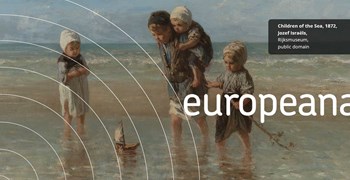Migration stories of community – culture that is shared, not diminished
Community is defined by the Oxford Dictionary as: ‘a group of people living in the same place or having a particular characteristic in common’. But what happens when you don’t have anything in common with those you live with? Does your identity change in line with the community – or do you change the community?
In collecting stories about migration, the concept of community was continually raised. In this current political climate, integrating as a migrant into a new society sometimes gets confused with assimilation. We often focus on how must change and adapt to our new surrounds.
However – little focus is placed on how we change it; how we contribute to it, and how culture evolves to become richer from the joining of these cultural tapestries.
Two twigs exemplifies this ideology. The group pictured are a Ukrainian dance group who emigrated through Germany and Italy after they became displaced after World War II and the political unrest in the former Soviet-Yugoslavia. The reference to ‘Two twigs’ relates to the two differing migration journeys of the group, which both ended with the community settling in Geelong, Victoria Australia.
While their stories of migration were the result of displacement and the very loss of national homeland and community, their outcome was one of cultural sharing. The image illustrates this – it doesn’t focus on how the group were changed by migration – it shows how their migration changed the community. Just as we shared the story of Balbino Cuervo who helped developed Spanish communities and schools in the Netherlands, those who emigrated from Ukraine were able to bring their culture and traditions to Australia – adding diversity and richness.
Sharing culture through dance
Two Twigs | Natalie Senjov-Makohon, Europeana Migration Collection, CC BY-SA
Exposition universelle de 1889 | Neurdein Frères, 1889, Parisienne de Photographie, France, Public Domain
Many countries have historically welcomed a diversity of culture – even if recent political decisions may insist otherwise. Carnaval del Pueblo in south London shows a moment of community through cultural sharing.
The attached the photograph illustrates the impact of the Latin American community on a south London neighbourhood. The contributor highlights that the area hosts a Latin American carnival local sporting events.
The story really illustrates the intermingling of two cultures – the typically London pub the ‘Elephant and Castle’ hosting the community of Colombian and Greek football fans and Latin American carnival goers.
‘There was a real family vibe, with all ages from grandparents to babies. There was a great atmosphere, people taking mass photos of the whole crowd, chanting songs, doing Mexican waves and flinging popcorn around.’
Community, colour and Carnaval
Carnaval del Pueblo in south London | acediscovery, Europeana Collections, CC BY-SA
The Carnival in Rome. Fragment | Christoffer Wilhelm Eckersberg, 1828, Statens Museum for Kunst, Denmark, CC0
It is important to remember that stories of migration should not only focus on what the person migrating is receiving, or how they are changing. We should remember too what they are offering and what they are sharing. Herein lies the beauty of community building in stories of migration.
Migration has mutual, positive effects on individuals and communities. This theme has weaved its way through the Migration Collection and the many of the works showcased on Europeana Collections.
Read all the stories from Europeana Migration. Or if you have your own story of migration, share it with us here or at the next Collection Day focused on communities at EPIC The Ireland Emigration Museum in Dublin on August 18-19.
















